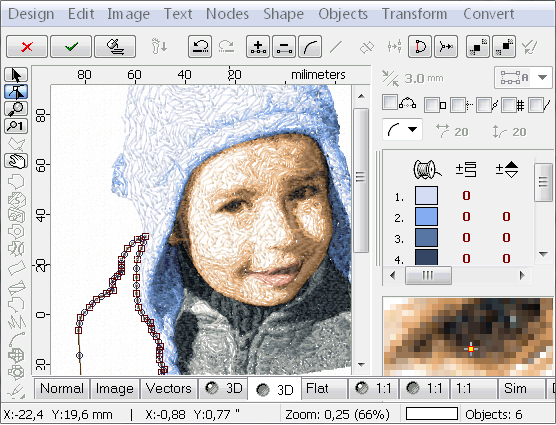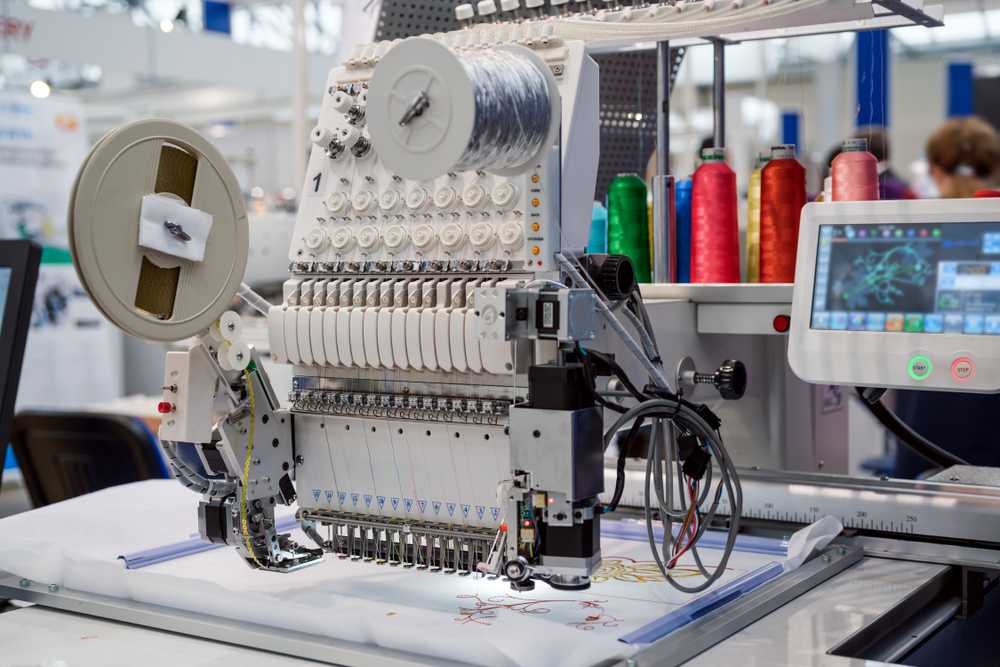Mastering the Needlework Digitizing Refine: Your Ultimate Guide
Needlework digitizing is a thorough craft that requires precision and experience to equate elaborate designs right into digital formats for maker embroidery. As craftsmens begin on this journey to grasp the embroidery digitizing procedure, a detailed understanding of the basics establishes the structure for excellence.

Recognizing Embroidery Digitizing Fundamentals
Needlework digitizing basics form the foundation upon which complex layouts are converted right into machine-readable layouts for specific sewing. This first action in the needlework digitizing procedure is critical for ensuring that the last stitched item is a loyal depiction of the initial style. Comprehending embroidery digitizing fundamentals involves grasping key principles such as stitch kinds, stitch direction, density, underlay, and pull settlement.
Sew types play an important role in establishing the aesthetic and textural result of the embroidered layout. By picking the proper stitch type, whether it be satin, fill, or running stitch, digitizers can achieve the wanted impact and improve the overall top quality of the needlework. Additionally, sew instructions influences the circulation and measurement of the style, while density establishes the spacing and insurance coverage of the stitches.
Moreover, rug stitching provides security to the style by securing the textile and avoiding distortion during the needlework process. Draw payment is one more important consideration to neutralize the natural propensity of material to agreement when stitched. Mastering these needlework digitizing essentials is fundamental for producing professional-quality embroidered items.
Selecting the Right Digitizing Software Program
Selecting the suitable digitizing software is an essential decision that substantially influences the efficiency and quality of the embroidery digitizing procedure. Digitizing for Embroidery. When picking the right digitizing software, it is necessary to take into consideration factors such as the complexity of layouts you plan to create, the user-friendliness of the software application, the level of client assistance used, and the compatibility with your needlework equipment
There are numerous digitizing software program alternatives available in the market, ranging from basic programs for beginners to innovative software program for specialist digitizers. Some preferred selections consist of Wilcom EmbroideryStudio, Hatch Needlework Software Program, and PulseID. These software use a vast array of devices and functions to assist you produce elaborate designs effortlessly.
Before deciding, it is suggested to discover the various software application options through cost-free tests or trials to figure out which one ideal matches click this link your requirements. Additionally, reading testimonials and looking for suggestions from skilled digitizers can provide valuable understandings into the strengths and weak points of each software (Digitizing for Embroidery). By meticulously reviewing your needs and comparing the functions of different digitizing software, you can make an enlightened option that enhances your needlework digitizing operations
Digitizing Tools and Methods

Optimizing Design Settings for Needlework
Understanding the intricacies of design setups is basic in attaining optimum lead to the needlework digitizing procedure, building upon the foundation laid by understanding digitizing tools and techniques. When maximizing layout setups for needlework, it is vital to think about aspects such as stitch kind, density, underlay, draw settlement, and enrollment. Stitch type option influences the general feel and look of the layout, with alternatives like satin, fill, and running stitches using different structures and results. Density describes the spacing and density of stitches, impacting the style's protection and sturdiness. Proper underlay sewing offers stability and protects against material distortion, particularly for complex layouts or on stretchy products. Pull compensation readjusts for material stretch throughout stitching, guaranteeing exact style replication. Enrollment settings straighten various elements of the layout accurately, keeping general design honesty. By fine-tuning these design go to my site setups, embroiderers can improve the quality and accuracy of their embroidered productions.

Troubleshooting Common Digitizing Issues
When running into typical digitizing concerns during the embroidery procedure, it is important to recognize the root triggers and apply effective options promptly. One typical trouble is stitch density problems, where stitches might be too dense, creating the fabric to pucker, or as well thin, resulting in voids in the layout. Adjusting the stitch density setups in the digitizing software can help fix this concern.
Another frequent difficulty is thread breaks throughout the needlework procedure. This can occur because of different factors such as incorrect tension settings, boring needles, or making use of low-grade string. Ensuring appropriate upkeep of the needlework equipment, consisting of regular needle changes and tension modifications, can lessen the event of string breaks.
In addition, design registration mistakes can lead to misaligned aspects within the needlework layout. Examining the layout placement in the digitizing software program and making necessary adjustments prior to stitching can help in preventing this concern. By addressing these common digitizing concerns promptly and pop over to these guys effectively, you can guarantee a smoother embroidery process and top notch completed products.
Conclusion
To conclude, mastering the needlework digitizing procedure calls for a strong understanding of the fundamentals, the best choice of software, and expertise of devices and strategies. Maximizing style settings and fixing common digitizing concerns are crucial action in making certain top notch embroidery results. By adhering to these steps diligently, one can attain accuracy and effectiveness in the digitizing process.
Comments on “Top-Rated Digitizing for Embroidery: Perfect Stitch Every Single Time”